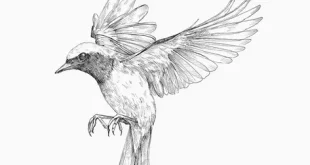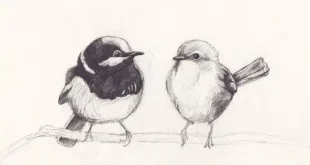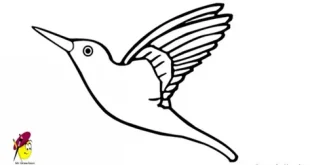Black Drongo Birds: The Fearless Guardian of Skies
The Black Drongo Bird (Dicrurus macrocercus) is a small yet striking bird known for its glossy Black Drongo Bird plumage, forked tail, and unmatched bravery. Native to Asia, particularly in India, Pakistan, Sri Lanka, and Southeast Asia, this bird plays a significant role in maintaining ecological balance. Despite its modest size, the Black Drongo Bird has earned a reputation as a fierce protector of its territory and a relentless fighter against predators much larger than itself.
1. Physical Appearance and Unique Traits
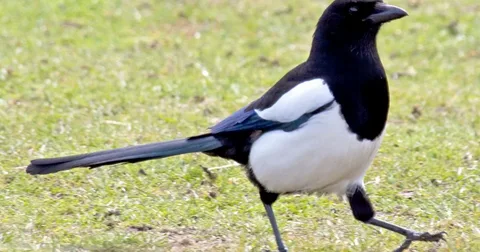
The Black Drongo Bird is easily recognized by its sleek, glossy black feathers that shine with hints of blue or green under sunlight. Adults typically measure 28–30 cm in length, their distinctive deeply forked tails, which enhance their flight. Despite its small size, weighing only about 40 grams, this bird displays incredible agility and speed in the air.
Its sharp, slightly hooked beak makes it an efficient insect hunter, while its keen eyesight allows it to spot prey and threats from afar. One of its most unique behaviors is mobbing, where it fearlessly chases away predators such as hawks, eagles, and crows — often much larger than itself. This boldness has earned the Black Drongo Birds nicknames like “King Crow” and “Farmer’s Friend” due to its protective nature around agricultural fields.
Another fascinating trait is its highly intelligent mimicry. The Black Drongo can imitate the calls of other birds to confuse competitors or lure them away from its nesting area, showcasing its cleverness in survival strategies.
2. Habitat, Distribution, and Adaptability
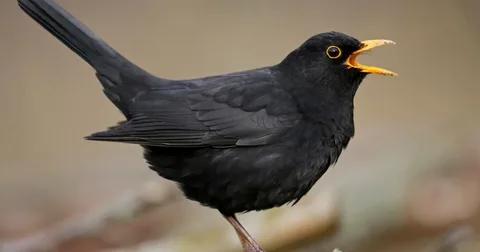
Its wide distribution extends across South Asia, Southeast Asia, and parts of the Middle East, making it one of the most commonly spotted birds in these regions.
In rural areas, the Black Drongo is often seen perched on electric wires, tree branches, or cattle backs, keeping a vigilant watch over its surroundings. It prefers open spaces where it can easily spot insects and swoop down to catch them mid-flight.
One reason for its successful spread is its ability to coexist with humans. Farmers particularly welcome this bird because it feeds on harmful insects such as beetles, termites, grasshoppers, and crop-destroying caterpillars. In return, the drongo benefits from open fields where prey is abundant, creating a natural symbiotic relationship between the bird and agricultural communities.
3. Diet, Behavior, and Breeding Habits Black Drongo Bird
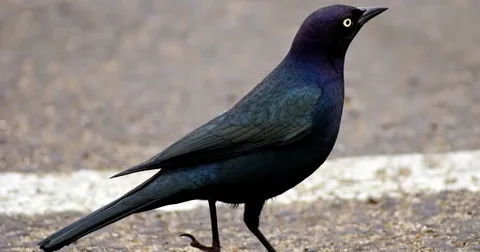
Its favorite diet includes flies, wasps, grasshoppers, dragonflies, and beetles, but it also consumes small reptiles and occasionally seeds. It is an agile flier, often seen performing rapid twists and turns to capture insects in mid-air with precision.
This bird is also famous for its fearless territorial defense. During the breeding season, especially from April to August, it becomes even more aggressive in protecting its nest. It builds a small, cup-shaped nest in trees using grass, twigs, and plant fibers, carefully hidden among branches to deter predators.
The Black Drongo is known for its strategic partnership with grazing animals like cattle and buffaloes.
Additionally, its mimicry skills come into play during food competition. By imitating alarm calls of other birds, it often scares them away from food sources, securing its meal with minimal effort — a fascinating example of resourceful survival tactics.
4. Cultural Significance and Ecological Importance
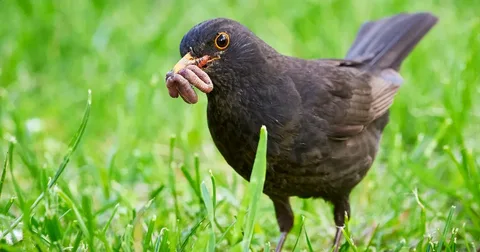
The Black Drongo holds cultural value in many regions where it is considered a symbol of courage and protection. In rural folklore, farmers believe the bird brings good luck and protects crops from pests, earning it reverence and respect.
From an ecological perspective, the Black Drongo plays a vital role in natural pest control. By consuming large numbers of crop-damaging insects, it reduces the need for chemical pesticides, promoting healthier farming ecosystems. Its predatory role also helps maintain the balance between insect populations and plant life.
However, despite its adaptability, the Black Drongo faces challenges such as habitat loss, urbanization, and exposure to toxic pesticides.
This bird also demonstrates the interconnectedness of humans, wildlife, and ecosystems. Its relationship with agriculture highlights how natural predators can significantly support sustainable farming practices, benefiting both biodiversity and food production.
Conclusion
The Black Drongo is much more than a small black bird; it is a fearless defender, a clever strategist, and an essential ally for farmers and ecosystems alike. Its glossy plumage, forked tail, and remarkable behaviors make it one of the most captivating species in the avian world. By controlling pests naturally and maintaining ecological balance, the Black Drongo showcases the harmonious relationship between nature and agriculture.
Protecting this resilient bird means preserving its role in sustaining healthy environments for future generations. Whether perched on a wire scanning for prey or bravely chasing away predators, the Black Drongo remains a shining example of nature’s brilliance and adaptability.
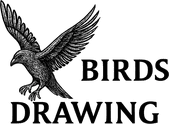 Birds Drawing Birds Drawing
Birds Drawing Birds Drawing

